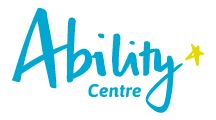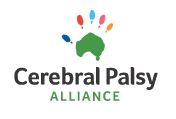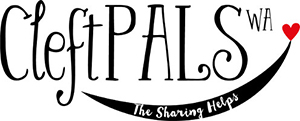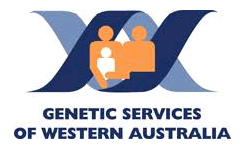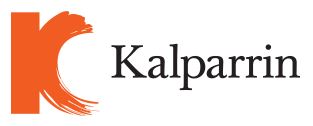WA Register of Developmental Anomalies (WARDA)
The Western Australian Register of Developmental Anomalies (sometimes referred to as WARDA or the Register) brings together two registers, the WA Birth Defects Registry and the WA Cerebral Palsy Register, under one banner to record and monitor developmental anomalies in WA.
Having a register like WARDA is very important. Approximately one baby in every 20 (5% to 6%) is born with a developmental anomaly in Western Australia and this may contribute to ongoing childhood health problems and disability and, in some cases, death.
WARDA collects information to keep track of where and when developmental anomalies are occurring in WA. This information also guides research and helps to investigate causes, prevention and management of developmental anomalies.
Did you know?
In WA, it is estimated that a child is born with cerebral palsy every five days.
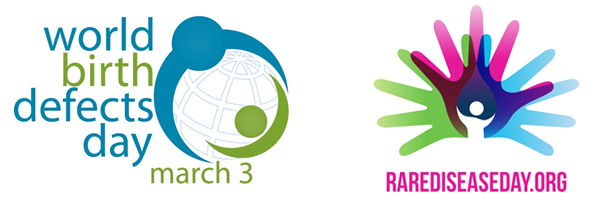
What is a developmental anomaly?
A developmental anomaly is a broad term used to define conditions which are present at conception or occur before the end of pregnancy. In the case of cerebral palsy, a small number also occur after birth. An anomaly is considered as a departure from normal development. Developmental anomalies are also sometimes called birth defects, congenital malformations or congenital anomalies.
For the register, a developmental anomaly is defined as:
- Cerebral palsy or
- A structural or functional anomaly, which is present at conception or occurs before the end of pregnancy and is diagnosed during pregnancy, or after stillbirth or termination of pregnancy, or after live birth, but before six years of age.
Structural means how the body is built and functional means how the body works. Structural developmental anomalies include conditions such as spina bifida, congenital dislocation of the hip and congenital heart defects. Functional anomalies include conditions such as cystic fibrosis and haemophilia. Fetal alcohol syndrome and Down syndrome are also developmental anomalies.
Check out the inclusion list (PDF) of developmental anomalies that WARDA keeps records for and the exclusion list (PDF). These lists are not exhaustive and many less common anomalies are not listed.
For parents
Every parent hopes their baby will be healthy. Some babies are born with developmental anomalies such as cerebral palsy, spina bifida, Down syndrome or phenylketonuria (PKU).
Parents who have a child who has a developmental anomaly often have many questions including:
- Why does my child have an anomaly?
- If we have another child, will the same or similar anomaly occur?
- Did my family history, the place where I live or the substances I was exposed to during my pregnancy contribute to the occurrence of the developmental anomaly?
These questions are often difficult to answer, especially if there is little known about the anomaly and the reasons for its occurrence. The collection of accurate information about developmental anomalies helps to answer these and other questions.
What information is collected by the Register?
The Register collects information on the child and their mother and father including:
Child:
- Name
- Address
- Date of birth
- Gender
- Aboriginality/non-Aboriginality
- Birth measurements
- Diagnostic information for each developmental anomaly up to a total of 10 anomalies and the age at which each anomaly was diagnosed. Information is collected on all diagnoses up until the age of six years.
Mother (and father where appropriate):
- Name
- Address
- Date of birth
Information is also collected on pregnancy termination or stillbirth, and, if the baby has died, the date of death.
The person who provides the information to the Register and the date they provided it is also recorded.
Information on names and dates of birth are needed so each child is only counted once. Information on the Register will be linked with other information collected by law on births and deaths in WA.
Why is the information collected?
WARDA maintains an accurate database of developmental anomalies which occur in WA and has done so for several decades as the WA Birth Defects Register and the WA Cerebral Palsy Register.
The information held by WARDA is used to:
- Monitor the number of cases of developmental anomaly in WA.
- Plan, monitor and evaluate services for the prevention and alleviation of developmental anomalies and the care of persons with a developmental anomaly in WA.
- Compile and publish general or statistical information relating to developmental anomalies.
- Carry out research into the causes of developmental anomalies and the effectiveness of prevention, screening and treatment services.
How is the information collected?
The CEO of the hospital in which the diagnosis of a developmental anomaly is made and/or the doctor making the diagnosis or caring for the patient diagnosed are responsible by law for the notification, as a result of the Health (Western Australian Register of Developmental Anomalies) Regulations 2010. Notification is required within six months of the diagnosis. Register staff gather further details from medical records and/or doctors if required. Voluntary notification is also accepted from other sources.
How is my privacy protected?
We take privacy seriously and all information held by the Register is maintained securely. Register staff abide by the WA Health Code of Conduct which highlights confidentiality as an important part of responsible care.
Reports released from the Register are in statistical form, without identification of individuals, doctors or hospitals. It’s unusual for named data to be provided and those who request this information must go through several rigorous steps before gaining access. Families who don’t want to be contacted for research purposes can advise the Register.
Can I access my record?
WARDA respects your right to know what information is held on the Register about you or your child. If you would like to obtain this information, complete the WARDA Information Request Form (Word) or contact the Register for a copy. All copies should be mailed to WARDA.
Removing identifying information
WARDA respects your right to request that identifying information about yourself or your child be removed from the database. This can only be done after the information has been held by WARDA for six years.
If you wish to remove your details, complete the WARDA Removal of Identifying Information Form (Word) or contact the Register for a copy. All copies should be mailed to WARDA.
In both instances, you will be required to provide evidence of identity and relationship to the individuals whose information you are requesting.
For help completing these forms, contact WARDA or the Health Consumers’ Council at info@hconc.org.au or on 1800 620 780.
Who can access the information?
On average, 30 to 40 requests for information or data are received by WARDA each year. These requests come from State or Federal Departments of Health, health professionals and institutions in WA, Australia or overseas as well as the public, the media and students.
Community organisations such as support groups also contact the Register for information.
Reports released from the Register are in statistical form, without identification of individuals, doctors or hospitals. It’s unusual for named data to be provided and those who request this information must go through several rigorous steps before gaining access. Families who don’t want to be contacted for research purposes can advise the Register.
Frequently Asked Questions
What are Health (Western Australian Register of Developmental Anomalies) Regulations 2010?
The Health (Western Australian Register of Developmental Anomalies) Regulations 2010 (external site) regulations came into effect on January 7, 2011. The regulations make it law for medical practitioners and hospitals to notify cases of developmental anomalies to the Western Australian Register of Developmental Anomalies (WARDA).
What is a developmental anomaly?
For the purposes of these regulations, a developmental anomaly means:
- Cerebral palsy or
- Anomalies that affect structure or function, which are present before birth and are diagnosed by six years of age.
Structural means how the body is built and functional means how the body works. Structural developmental anomalies include conditions such as spina bifida, congenital dislocation of the hip and congenital heart defects. Functional anomalies include conditions such as cystic fibrosis and haemophilia. Fetal alcohol syndrome and chromosomal anomalies such as Down syndrome are also developmental anomalies.
Developmental anomalies are also sometimes called birth defects, congenital malformations or congenital anomalies.
Some anomalies are not included unless they need treatment, eg some birthmarks, extra finger or toe.
Is the Western Australian Register of Developmental Anomalies new?
No. WARDA is a combination of the WA Birth Defects Registry and the WA Cerebral Palsy Register, both of which have been in operation for several decades.
Why has the name changed?
The new name brings together the WA Birth Defects Registry and the WA Cerebral Palsy Register. It also better reflects the conditions on which information is collected, as, although some anomalies are diagnosed before birth, not all anomalies are obvious at birth and many may not be diagnosed until several years after birth.
The new name was chosen by WA parents and consumers.
Why do we need a register?
We need the Register to be able to:
- Monitor the number of cases of developmental anomaly in WA;
- Plan, monitor and evaluate services for the prevention and alleviation of developmental anomalies and the care of persons with a developmental anomaly in WA;
- Compile and publish general or statistical information relating to developmental anomalies; and
- Carry out research into the causes of developmental anomalies and the effectiveness of prevention, screening and treatment services.
What information is collected on the register?
WARDA collects information on the child and his or her mother and father, including:
Child: name, address, date of birth, gender, Aboriginality/non-Aboriginality, birth measurements, diagnostic information for each developmental anomaly up to a total of 10 anomalies and the age at which each anomaly was diagnosed. Information is collected on all diagnoses up until the age of 6 years.
Mother (and father where appropriate): name, address, date of birth
Information is also collected on pregnancy termination or stillbirth, whether the baby died and date of death.
The person who provided the information to the register and the date they provided it is also recorded.
Information on names and dates of birth are needed so that the same child is not counted more than once. Information on the register will be linked with other information collected by law on births and deaths in Western Australia.
Who provides this information to the register?
By law, the chief executive officer of the hospital in which the diagnosis of a developmental anomaly is made and/or the doctor making the diagnosis or caring for the patient diagnosed are responsible for the notification. This is required within six months of the diagnosis. Failure to do so may result in a fine.
Will the doctor tell the parents that information has been provided to the Register?
The doctor should explain that s/he is required, by law, to inform the Register of the developmental anomalies he or she has diagnosed or that occur in children he or she is caring for. The doctor may also give the parents a brochure about the Register.
Can parents find out what information is help by WARDA about their child?
Yes. Parents have a right to know if there is information on the Register about their child and if so, to be given a copy of that information. Requests for this information must be made in writing by completing the WARDA Information Request Form (Word).
If you require assistance with completing these forms, you can contact WARDA or the Health Consumers Council on 1800 620 780 or info@hconc.org.au.
Can parents ask for information to be removed from the register?
Yes. A parent can ask for identifying information about their child to be removed from the Register after it has been kept on the Register for at least six years. Requests to remove identifying information must be made in writing by completing the WARDA Removal of Identifying Information Form (Word). Information which is not identifying information may be retained on the register.
If you require assistance with completing these forms, you can contact WARDA or the Health Consumers Council on 1800 620 780 or info@hconc.org.au.
Where can I obtain more information about the regulations or the Register?
If you have further questions, please do not hesitate to contact WARDA.


